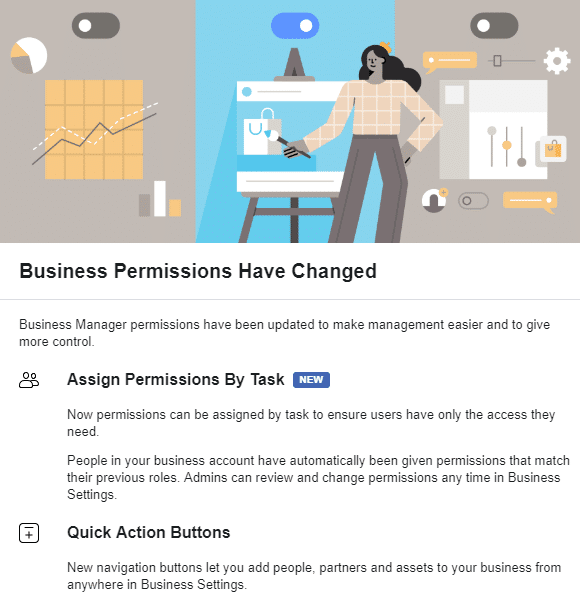“Hello beautiful, happy Friday,” I say as Connie’s face appears on our Zoom video conference call.
As usual, her beautiful white-blond hair is flowing around her face. I don’t see Dolby, but I assume he’s lying somewhere nearby, his bulky Golden Retriever body in happy slumber. It looks like a sunny day in Montana from the light around the camera.
“Hello, and back at ya beautiful,” she chirps. “How are you?”
I know she really means it. Not like those people who say, “How are you?” and before I can even answer, they are ten feet away not even waiting for me to respond.
“I am exhausted,” I admit. “I’ve been up since 3:30 am for a 4am call with Europe.”
I’m at my work-from-home desk, where I’ve been sitting for most of the past 11 hours, other than to get up and pee, or grab coffee or food. What I really need is a walk on the beach, but it’s Friday, and we have a lot to cover in our weekly marketing meeting. So, instead of a walk, I have a glass of red wine in front of me.
“But I’m fine,” I say, knowing from experience that these end of the week calls with Connie usually energize me and make me feel better.
“How are you doing?” I ask.
As typical, we are both wearing our matching anti-glare computer glasses. We don’t say it, but we admire the girl geek in each other.
“Good!” she says.
We exchange a few personal updates, before getting down to business.
COLLABORATION COMES CRASHING DOWN
“Should we dive into our metrics?” I ask.
We’re trying to use data across the many tools tracking our web and social media initiatives, like RivalIQ, Google Analytics, Facebook Insights, etc. Sometimes, we get lost and spend two hours just wading through data. We are both data geeks.
However, today, we don’t start with data. There’s a bigger issue we both know we should talk about first. And that’s Facebook. It’s just that neither of us wants to ruin the moment.
The Facebook incident started earlier in the week, when our discussion in the comments section of our shared Google Doc went from uncomfortable to borderline nasty. This is the doc where we track our weekly priorities. Usually, it really helps with collaboration.
Not this time. This chat didn’t follow our normal back and forth. In fact, we stopped collaborating, and we both went on a strong offense, pushing each other into defensive mode.
“What happened to Facebook? I can’t access admin stuff anymore.” I wrote in a comment.
“What are you talking about?” Connie replied in the doc. “I didn’t do anything.”
A day later, she wrote: “Something changed when you set up our SNOL business account, and now my personal business account is messed up big time.”
“I haven’t touched Facebook in three weeks since I set up the account. You have been doing the FB ads lately,” I countered.
Fast forward to now and our face-to-face video chat. Instantly, without catching ourselves, we’re diving back into the blame game. Finger Pointing. NOT Supporting. Not like us.
FACEBOOK UPDATES TORE US APART
“Something happened when you set up the ads – I shouldn’t have had to give you my credit card again.” My frustration is apparent with my opening salvo.
“This is why I manage my other client’s Facebook accounts through my own business account,” she explains with an undercurrent of passive aggression.
10 years and 1800 ads, and I’ve never had an issue until now, Connie thinks.
“Well, then you should have advised that before I set up the account,” I quip back.
I’m pretty sure I did advise that! Connie fires back in her mind.
“And, when I set up the business account, everything was fine,” I defend myself.
“It’s not fine. Not only can I not do anything on the SNOL account, but now my business and personal accounts are completely messed up,” she says with frustration.
“She’s supposed to be the f*cking social media expert,” I’m thinking.
“When will she realize who she’s working with? I learned from Mari Smith, and Gary Vaynerchuck follows me on twitter!” Connie thinks simultaneously
Our conversation is sliding into dangerous territory.
With a flash of self-awareness, I realize I am not using my Crucial Conversations practices. So, I breathe deep and attempt to start over.
“Let’s go into Facebook and look together.”
FACEBOOK’S BAD UX UNITES US
We go to our SnortOutLoud business manager page. Everything looks different. For example, where are our business settings or our admin roles? Where the f*ck is anything anymore? It’s like landing on an alien planet without even knowing we left Earth.
Strangely, Connie’s personal email is now somehow associated with our SnortOutLoud page, and I am not a business manager or admin at all anymore.
Let me clarify something here. We are both seasoned social media pros who know what we’re doing, and none of this is making any sense AT ALL. WTF did Facebook do?
“There it is,” Connie is pointing to the screen. “Click on the Business Settings tab in the far upper right corner.”
“Who the f*ck did this user experience?” I sigh with serious frustration. “You never put a major action button in the far upper right corner. And you don’t make it BLUE!”

Finally, after 10 minutes of flailing around the business account interface, a “pop up” appears neither of us has seen before.
It informs us that Facebook has changed the business manager experience to make it better and easier to use.
I read out loud the sentence in the middle of the pop-up: “People in your business account have automatically been given permissions that match their previous roles.”

“What the…???” we say in unison, breaking into laughter. And relief.
“Oh my god, Facebook randomly decided how to assign us roles? And which emails to put on which accounts? And who should do what?” we ask in absolute disbelief.
And once again, just like that, we’re unified.
REPAIRING THE DAMAGE
“But, we didn’t get any warning,” Connie says. “No email, no message . . . they just update the UX and everyone’s roles and permissions without telling us?” Are you kidding me? That’s such a Facebook thing to do.”
“Looks like it,” I confirm, shaking my head.
“Oh my god, I am so sorry,” I say, feeling guilty.
“I’m sorry, too. I was totally blaming you,” Connie admits.
“I can’t believe we were ready to kill each other and were both SO positive the other person had totally messed up our Facebook account.” I whine.
“So much for women intentionally supporting other women,” Connie smirks.
“Good one,” I admit
“You should totally write a blog on this,” Connie suggests.
“Maybe I will,” I say.
For the next 45 minutes, we attempt to navigate this new “experience.”
We figure out how to make each of us a “business manager.”
I find the page that enables us to assign permissions or access rules for different parts of our account. Facebook has introduced something called an “Asset.”
“What the hell is an asset,” Connie asks
“Well, it appears an Asset can be a page, a post, an ad, or anything we do on Facebook business,” I hypothesize.
We get a bunch of areas fixed, but personal and business information are still mingled together.
TROUBLESHOOTING FACEBOOK ISSUES
“Maybe we need to log me out on both of our computers, and then log back in separately with our personal authentication? Somehow I think we are both logged in as me.” I try to troubleshoot.
“Sure, try that.” Connie coaches.
There’s a button that says “Leave Margaret” on the business manager page.
“Did an Australian write this?” I quip. “Does this mean, like, Margaret is now leaving the account. Or does it mean Log Out Margaret.”
We assume the latter.
Nope. We are wrong. By clicking on the “Leave Margaret” button, I receive a pop up asking if I’m sure. I am not sure, so I decide to click “Dismiss”.
Dismiss somehow did not mean cancel. Instead, Facebook completely erased “Margaret” from our business account! Wait…wha…what???
“Holy shit, that can’t be right. No warning, nothing. Just click Leave Margaret, and I’m erased from the account,” I say in total disbelief. But I hit “Dismiss”, I cry out.
“That’s SO Facebook! It’s not you!” says Connie, coming to my defense. “Facebook is Facebook. It feels like they don’t beta test the user experience before pushing out an awful solution to a problem that didn’t exist.”
Seriously, “Leave Margaret”? Not, remove Margaret from this account? Or, do you want to erase Margaret from every piece of this business account, so she is banned from all activities? Nope, just “Leave”.” I mean seriously…who does this?

“Okay, let’s start over.” As our only business manager left, she is able to re-invite me to be a business manager of MY account.
By the end of our lengthier than normal meeting, we resolve most of the issues, other than Connie’s email is still wrong.
IT’S NOT JUST US
In doing research after this weekly meeting debacle, I find only a couple of articles explaining the new user interface. I do learn Facebook launched the new experience during the exact period of time Connie and I descended into Facebook “mean girl” land.
According to an article in Digital Information World, the Facebook team wrote a blog post on this exciting update: “We’re always working to improve our advertising solutions and business tools, and as part of this effort, we’re introducing a new design and navigation in Business Manager that will make it easier and faster to manage assets and permissions across our platforms.”
However, I looked for this blog post via multiple searches within Facebook’s site and on Google, but I could not find the source of this quote nor any blog on this new update.
The author of the article in DIW also reported that the Facebook team “tested” these design and navigation updates. Really? With whom did they test these updates? They sure as hell didn’t give the average small business any heads up.
It could be just us. Search Engine Journal, had a short article stating: “With a new design and navigation, users should find it easier to manage assets and permissions in Business Manager going forward.” Uh, did anyone at the SEJ actually attempt to manage a business account before writing this lovely review?
It isn’t just the Business Manager interface pissing off users. Many clients trying to use Facebook’s ad network are fuming!
“Ads Manager is crashing with regularity, according to interviews with numerous advertisers. The outages, which can last for hours at a time and make it impossible to start a new ad campaign or manage an existing one, seem to happen every month,” according to a Bloomberg article.
LEARN FROM OUR MISTAKES
So what can we all learn from this exercise? Here are a few takeaways and learnings Connie and I had from this experience.
1. Don’t jump to conclusions!
2. Don’t blame another person without all the facts. Assume good intent!
3. User experience is a REALLY big deal, and your users really CARE about the interface.
4. Change is hard, so take more time than you should to explain changes to your customers.
5. Changes done poorly really piss off your customers and threaten to directly impact your retention and revenue.
6. Friendships and business relationships are more important than Facebook (or any social network).
The user experience for an application, whether social media or enterprise, needs to be put first, not last, in the product development cycle. Too often, we focus on the cool new feature or capability, and then back into how the user will interface or experience the new feature.
I am sure Facebook engineers and product managers had absolute best intentions. They want to make their products better for customers. However, sometimes we get too close to our product, and we lose sight of how customers really experience our technology.
I’ve seen many companies ignore some customer input because they judged those customers as “not very smart” or “not really our core target group.”
The truth is it shouldn’t matter. If a user interface is really doing its job, someone with zero technical background and NOT in your target audience should be able to figure it out.
WE ARE STILL USING FACEBOOK
In spite of all of this, we are still on Facebook, trying to navigate this new world, build our follower base, and hopefully, help change the world for the better with our posts about light, empowerment, and the occasional F-bomb.
Apparently, we (and thousands of others) are so addicted and dependent on social media networks that we can’t afford to build a business or a brand without them. Both Facebook and Instagram, which is owned by Facebook, are helping businesses build clientele and brands.
For example, one handyman business I know in my hometown does not have a website, and it doesn’t need one, because the recommendations and personal reviews on Facebook bring in more business than they can handle.
For many businesses, you must balance a group of social media networks – Twitter, Facebook, YouTube, Instagram, Pinterest, and others. All to reach customers or followers in different ways be it via stories, videos, photos, or details of your services.
However, not all small businesses or services companies have people who understand technology and/or social media. I think if this took two tech-savvy women two hours to troubleshoot, how is the average business owner managing this?
THE REAL TAKE AWAY
The real takeaway is how quickly two women nearly crashed a loving relationship. And these are women committed to supporting each other’s dreams and aspirations, and who deeply respect each other’s capabilities.
In a moment where we could not do our work and nothing seemed right, we turned on each other, making it personal. Instead, we should have assumed good intent, and blamed the technology, rather than the person.
Supporting another woman takes more than a proclamation. It takes constant self-awareness of our thoughts and actions. Intentional support requires us to slow down, analyze the situation, and maintain a positive approach, even in times of stress.
We have both committed to working harder to learn from this experience, so we don’t repeat it.
But let’s be honest, Facebook really did f*ck-up this recent update.



SNOL – I tried to subscribe but your site keeps saying my email has an error. My email is mlindsey@redhat.com
Can you please add me to your distribution list?
Thanks.
Maureen Lindsey
Hi Maureen, Sorry about your not being able to sign up using your email. We’ll look into it. In the meantime, we’ve added you manually. Thank you for subscribing!